Supply of S-400 air defense systems to Turkey: possible consequences
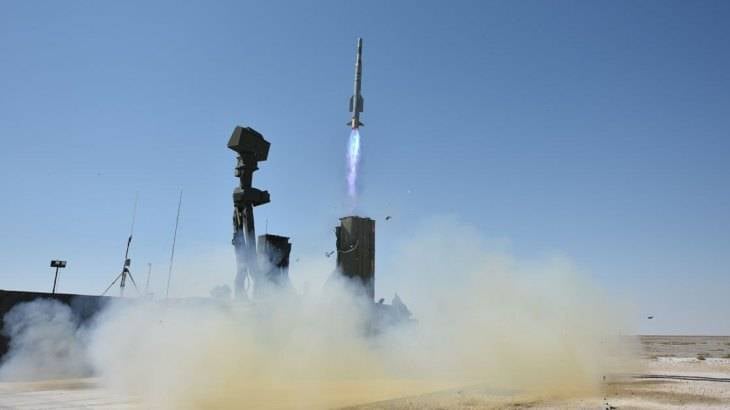
Turkey Air Defense System. Despite some disagreements with the United States, until recently, the Republic of Turkey was one of the largest recipients of US military assistance. However, in the last decade, Ankara has been trying to diversify the import of defense products, developing military-technical cooperation with other countries. Turkey also seeks to develop its national defense industry and is actively acquiring high technology. When visiting the TÜBİTAK SAGE Research Institute of Defense Industry (Ankara), President Recep Tayyip Erdogan said that in the future Turkey will cease to acquire any missile defense and air defense systems abroad. All that the Turks are fighting should be done in Turkey, since, according to Erdogan, a stranger weapons you won’t fight much. Over the past 15 years, Ankara spent more than $ 30 billion on these goals, which allowed it to reduce the purchase of defense products abroad from 80% to 20%.
Anti-aircraft missile systems developed in Turkey
The military-industrial complex of Turkey has reached the level where it is possible to create anti-aircraft missile systems that meet modern requirements. In 2008, Roketsan, in the framework of the T-LALADMIS project (Turkish Low Altitude Air Defense Missile System - “Turkish low-altitude anti-aircraft missile system”), began work on the creation of short-range air defense systems. To replace the Hawk XXI medium-range air defense systems and Rapier-2000 short-range air defense systems in 2011, the Department of Defense Industry of the Turkish Ministry of Defense officially issued Aselsan a technical task for the development of a new generation of air defense systems. Subsequently, Roketsan and Aselsan began to create a family of air defense systems, commonly known as Hisar. Since the Turkish Air Force in the future needed short-range, medium and long-range air defense systems, it was decided to create them with the maximum unification of components and components, which in the future should accelerate the development and reduce the cost of serial products.
Short and medium range systems were first presented at the 12th international exhibition International Defense Industry Fair 2015 (IDEF-2015), which was held from 5 to 8 May 2015 in Istanbul. SAM Hisar-A and Hisar-O (in some sources Hisar-B) have a similar guidance system and mainly differ in the basic chassis and dimensions of anti-aircraft missiles. In both complexes, vertical-launching missiles are used, with radio command guidance on the marching section of the trajectory and infrared homing on the final one. The missiles have a single infrared seeker and fragmentation warhead.
SAM Hisar-A is capable of hitting targets at a distance of 15 km and a flight altitude of 5 km. The launcher with four lifting transport and launch containers is placed on the FNSS ACV-30 armored tracked chassis, which also houses a rising mast with target detection radar and an electron-optical system. This makes it possible for a mobile air defense system to operate autonomously, but combat capabilities are limited by the relatively short detection range of the radar of the Hisar-A combat vehicle.
The Hisar-A air defense battery contains four combat vehicles, a transport-loading vehicle and a mobile command post, which receives information from long-range surveillance radars. In addition to the option on a caterpillar chassis, developed for the air defense units of the ground forces, the creation of object systems is underway, which should replace the British-made air defense systems Rapier-2000 in the defense system of airbases.
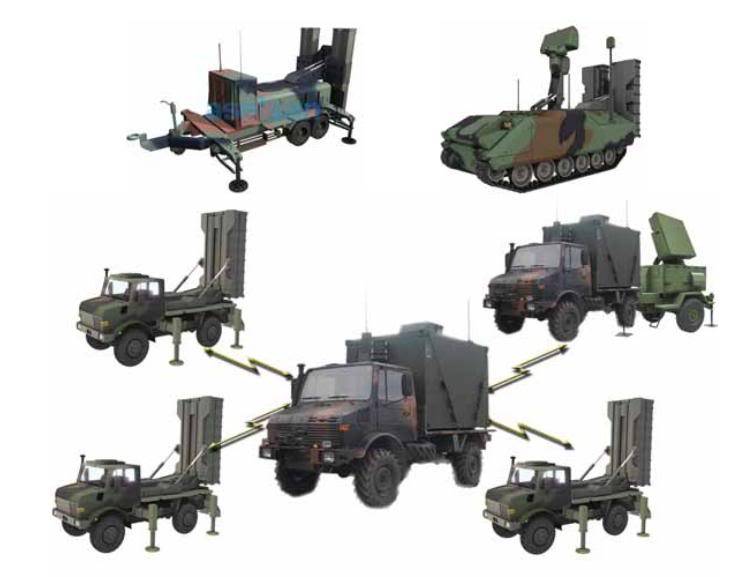
It can be either towed or self-propelled launchers on the chassis of two-axle off-road trucks. To detect airborne targets, it is proposed to use the AN / MPQ-64F1 Improved Sentinel three-axis low-altitude radar or Turkish KALKAN radar, coupled with the SINCGARS secure data transmission system.
Despite a slight shift to the right of the timing of adoption, it is possible to assert with a high degree of certainty that the mobile version of the air defense system will be brought to mass production. Successful testing of Hisar-A took place in October 2013, and now three prototypes are in trial operation. According to the contract, the first stage envisages the delivery of 18 mobile anti-aircraft systems to the troops. In total, over the next five years it is planned to build at least 30 Hisar-A air defense systems.
Hisar-O medium-range air defense systems (formerly known as T-MALAMIDS) use SAMs with a maximum firing range of 25 km and a range of 10 km. The launcher with six vertical-launching TPKs is placed on the Mercedez-Benz 2733 car chassis with a 6x6 wheel arrangement.
The anti-aircraft battery includes three self-propelled launchers with six rockets ready for use on each and transport-loading vehicles. The management of Hisar-O air defense systems is carried out from a mobile command post.
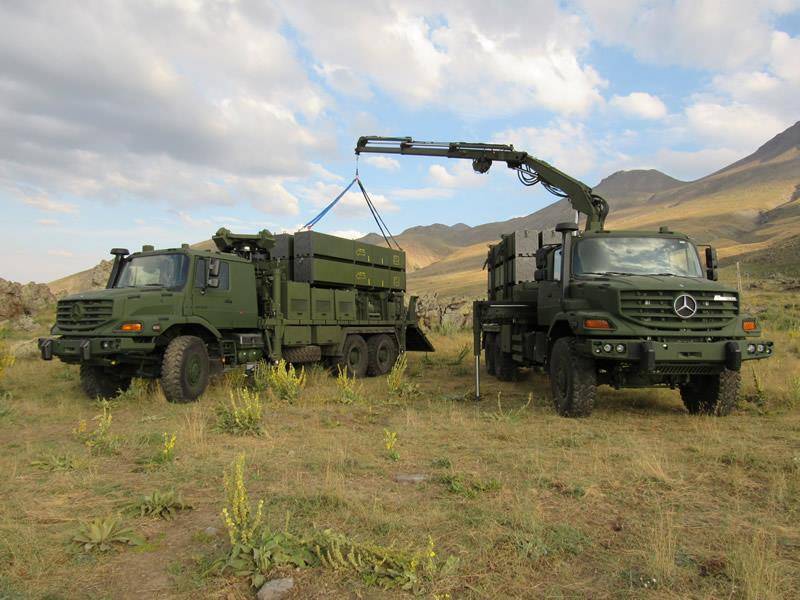
Primary information about the air situation comes from ground-based radars and AWACS aircraft using digital data transmission equipment MІDS as part of Link 16. Own means of detecting air targets are passive optoelectronic station on the chassis of an all-terrain vehicle and towed by KALKAN-II radar.
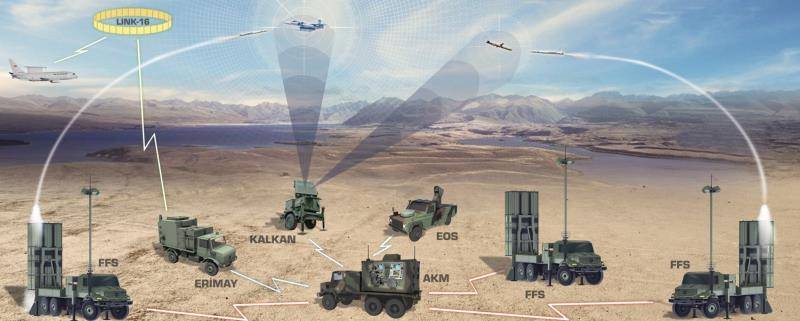
The three-coordinate radar with the KALKAN-II HEADLIGHT was developed by Aselsan. This station, operating in the frequency range of 8-10 GHz, has a detection range of up to 120 km and is capable of simultaneously tracking 50 targets.
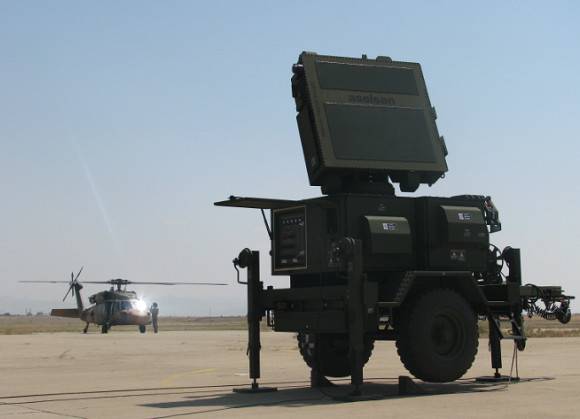
The first throw tests of Hisar-O anti-aircraft missiles took place in 2014, and in 2016 the first guided flight. The delivery of serial Hisar-O air defense systems to the troops is planned for 2021.
Although in Turkey Hisar-A is called a short-range complex, and Hisar-O is called medium-range, in fact it is a short-range air defense system. The overall dimensions and mobility of Hisar-O are comparable to the South Korean KM-SAM air defense systems or the promising Russian S-350. However, these systems are superior to Turkish Hisar-O in terms of firing range more than twice. SAM Hisar-A and Hisar-O are unsuitable for combating operational-tactical ballistic missiles and have significant limitations on the possibility of hitting supersonic air targets. In this regard, until recently, the development of more long-range options. The Hisar-ON air defense system with a range of 50 km was exploring the possibility of using an AIM-120 AMRAAM air-launched missile with active radar guidance. The Hisar-OD modification provided for the use of the RIM-162 ESSM missile. Hisar-U model should have a launch range of 120-150 km and a reach in height of at least 20 km
Regarding the possibility of developing medium and long-range air defense systems in Turkey, negotiations were held with the American corporations Raytheon and Lockheed Martin. However, judging by everything, the independent development of long-range complexes turned out to be too late for Turkish developers, and military-technical cooperation was stalled due to the aggravation of relations between the USA and Turkey.
Attempts to develop long-range air defense systems in Turkey, T-LORAMIDS tender and its results
Although the MIM-14 Nike-Hercules air defense system is still formally in service in Turkey, by the beginning of the 1990s it was clear that this complex was outdated and needed to be replaced. In the late 1990s, after Greece had the S-300PMU-1 Russian-made anti-aircraft missile system at its disposal, the Turkish leadership became concerned about the need to replace the Nike-Hercules air defense systems with a modern multi-channel and long-range mobile anti-aircraft missile system.
To study the possibility of independent creation of a long-range air defense system, a working group was created, which included qualified representatives of the Turkish military-industrial complex and military specialists. After six months of research, it was concluded that in the foreseeable future, Turkey is not able to independently create a long-range anti-aircraft missile system that meets basic modern requirements. In this regard, in 2009, a tender was announced for the supply of long-range anti-aircraft missile systems T-LORAMIDS (Turkish Long Range Air And Missile Defense System - “Turkish Long Range Air and Missile Defense System”).
The competition was attended by all manufacturers of long-range air defense systems. Applications were submitted by the Eurosam European consortium with SAMP / T air defense systems (with Aster 30 Block 1 missiles), the alliance of American companies Lockheed Martin and Raytheon (a combination of PAC-2 GMT and PAC-3), Rosoboronexport with the S-300VM Antey-2500 ”And China Precision Machinery Import-Export Corporation (CPMIEC) with HQ-9.
Among the systems presented as part of the competition, the S-300VM had the best anti-ballistic missile potential. But the Russian air defense system, mounted on a caterpillar chassis, did not fully meet the Turkish requirements in terms of mobility and fire performance in repelling massive air strikes. Apparently, the Russian side proposed the S-300VM because the production capacities previously used in the construction of the export S-300PMU / PMU-1 / PMU-2 air defense systems were overloaded with orders for the S-400 for the Russian Air Force.
The American proposal was very generous. In September 2009, the United States Agency for Security and Defense Cooperation (DSCA) notified Congress of the possible sale of 12 Patriot anti-aircraft batteries to Turkey. It was planned to supply 76 MIM-104F missiles, 201 MIM-104E missiles, as well as an additional batch of missiles with advanced anti-missile capabilities. In addition, under the contract, together with 48 launchers, the Turkish Air Force could receive 13 AN / MPQ-65 radars, 13 anti-aircraft missile guidance stations, 13 anti-aircraft battery control points, 4 automated anti-aircraft battery group control systems, eight sets of multi-function information transfer system (MIDS ) AN / USQ-140 (V) and six broadband repeaters, as well as autonomous power sources, spare parts sets and simulators. The estimated cost of the entire economy in 2010 was $ 7,8 billion. However, at the request of Ankara, at the first stage of the transaction, she had the opportunity to purchase anti-aircraft systems in the amount of $ 3,5 billion.
The European SAMP / T SAMS from the Eurosam consortium from the very beginning was not among the favorites, due to overpriced. In addition, at the time of the tender announcement, the land version of SAMP / T was not yet in mass production and its prospects were not clear. Also aroused certain doubts about the missile defense capabilities of the Aster 30 missiles.
The winner of the competition in 2013 unexpectedly became the Chinese company CPMIEC, which offered the best price. At the time of summing up the tender, the cost of 12 divisions of the HQ-9 air defense system (export designation FD-2000) was $ 3,44 billion. However, in 2015 the results of the tender were virtually canceled and the competition was restarted. The Turkish side did not give official explanations in this regard. A number of sources say that in addition to pressure from the United States, the reason for the refusal of the transaction was the unwillingness of the PRC to provide a license for the production of HQ-9 SAMs. Apparently, Turkey hoped with the help of China to join the elite club of manufacturers of modern air defense and missile defense systems.
It is known that even before the tender was announced, the TÜBİTAK SAGE defense research institute, together with Roketsan and Aselsan, began to develop the Siper long-range air defense system. According to initial plans, this complex was supposed to go into service in 2022. After China, fearing that it would harm its own defense industry, refused to share key technologies, Turkish representatives negotiated with European companies Matra BAE Dynamics Alenia and Thales Group. However, apparently, the parties failed to agree. One of the main reasons was the insolvency of Turkey. Considering that over $ 10 million was spent on the development of Hisar-A / O short-range air defense systems over 800 years, and the Siper program could be allocated no more than $ 500 million, this was clearly not enough to create a truly effective long-range anti-aircraft complex . In addition, European companies are not interested in the appearance on the international arms market of a competitor that is able in the foreseeable future to offer potential buyers anti-aircraft missile systems at dumping prices.
Deployment of Patriot air defense systems of NATO countries in Turkey
In 2012, in response to Ankara’s request for NATO to assist in securing airspace from Syria, the United States, Germany and the Netherlands sent two Patriot air defense batteries to Turkey each.
In February 2013, two SAM batteries delivered from the United States were put on combat duty in the Gaziantep region of southern Turkey. Anti-aircraft systems provided by the Netherlands took up duty on positions in the vicinity of the city of Adam, German - south of the city of Kahramanmaras.
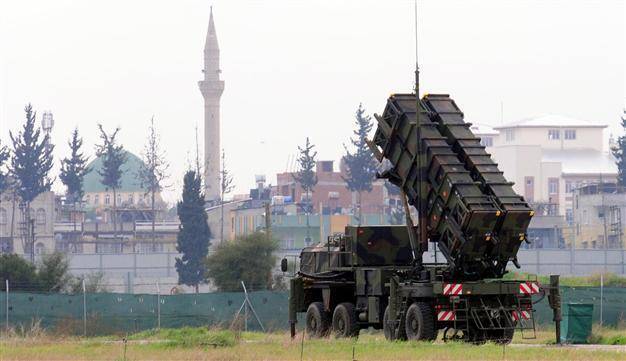
In September 2014, the Dutch Patriot air defense systems were replaced by the Dutch systems at the Incirlik airbase in the southern Turkish province of Adana. In 2016, Germany withdrew its air defense systems from Turkish territory. The US military also announced its intention to remove the Patriots from Turkey.
Apparently, in the short term, American long-range SAMs in Turkey will remain only in the area of the strategically important Incirlik American air base. Where A-10C attack aircraft, F-16C / D and F-15C / D fighters, KS-135R tanker aircraft and B61 fusion bombs are located on a regular basis.
Negotiations with the United States regarding the supply of Patriot air defense systems to Turkey
After the tender was announced by T-LORAMIDS, Ankara and Washington regularly discussed the possibility of supplying the Patriot RAS-3 air defense systems, and until recently, the Turkish leadership did not lose hope of receiving these systems. In November 2019, Turkish President Recep Tayyip Erdogan, at a meeting with Donald Trump in Washington, announced that he was ready to acquire the Patriot system if the United States offered favorable conditions. At a press conference following the visit, the following was said:
After the visit to the United States, the American delegation arriving in Ankara held talks with senior representatives of the Ministry of National Defense and the Ministry of Defense Industry of Turkey. As a result of negotiations, the US State Department approved the decision to sell Turkey Patriot complexes for $ 3,5 billion, and the American leadership through diplomatic channels transferred the conditions for the supply of Patriot PAC-3 air defense systems with MIM-104E missiles.
Turkish Foreign Minister Mevlut Cavusoglu in a statement following the results of the year told reporters that Turkey sent the last letter to the United States with a proposal for the supply of Patriot about a year and a half ago, and the decision of the State Department was based on this proposal. However, according to the minister, the acquisition of American air defense systems cannot be linked to the S-400 deal with Russia. Turkey has several criteria for acquiring Patriot air defense systems, one of which is an affordable price and the possibility of providing a loan. However, the key issue for Turkey remains the transfer of technology.
From all this it follows that the Turkish president is actively negotiating with Washington, blackmailing the Americans with the possibility of rapprochement with Russia. Ankara, claiming to be the regional leader, is trying to achieve military superiority over potential rivals and guarantee the invulnerability of its troops and strategically important objects from air attack weapons and tactical ballistic missiles. At the same time, the Turkish leadership is trying to achieve maximum independence from arms imports, transfer production to its own enterprises and gain access to high technology, thus reducing the gap between other developed countries and saving financial resources. However, the Americans are not eager to supply modern complexes to a whimsical ally without paying with real money and to share critical defense secrets.
Supply of Russian S-400 air defense systems to Turkey and possible consequences of this step
In November 2016, it became known that Turkish and Russian representatives were discussing the possibility of supplying S-400 long-range air defense systems to Turkey. On December 27, 2017, Rostec’s head Sergei Chemezov announced that Turkey will acquire four S-400 air defense divisions from Russia in the amount of $ 2,5 billion from Russia. At the same time, Turkey will pay only 45% of the total contract value in hard currency, and the remainder will cover the loan allocated by Russia. In addition to providing a loan, one of the conditions put forward by the Turkish side was the provision of detailed technical documentation, and assistance to Turkish companies in the development of the production of S-400 elements of interest to them.
On July 12, 2019, the first elements of the S-124 air defense system were delivered by An-400 Ruslan aircraft to the Turkish airbase Myurt. Turkish representatives confirmed that in July 2019, seven Russian heavy military transport aircraft with S-400 elements landed at their airfields. The second stage of deliveries of Russian air defense systems started on August 27 and ended on September 14. According to Turkish President Recep Tayyip Erdogan, the delivery process should be fully completed by April 2020.
From November 24 to 26, 2019, at the air base in the vicinity of Ankara, testing of S-400 air defense systems was carried out. At the same time, light F-16C / D fighters and RF-4E reconnaissance aircraft, as well as UH-1H helicopters were used as conditional air targets.
S-400 anti-aircraft missile system radars were deployed on the territory of the airbase: 91N6E radar system used as part of the regiment command post, 92N6E2 anti-aircraft missile battalion multifunctional radar station and 96L6E2 all-height detector.
Apparently, during this event, in addition to checking the operability, Turkish calculations proved their skills in practice and tested the capabilities of the Russian radars included in the S-400 air defense system. During the tests, the compliance of real data with the previously declared tactical and technical characteristics was confirmed. It can be assumed that after entering airplanes and helicopters into the zone of destruction of air defense systems, an “electronic launch” was carried out on them on a simulator simulator.
Information about the flight of Turkish S-400s with real airplanes and helicopters caused an ambiguous reaction in Russian and Western media. American representatives expressed their traditional “concern”, and in our forums, “patriotic” commentators and authors of some online publications began to say that the Russian military managed to obtain unique radar portraits of the latest NATO fighters. At the same time, among the aircraft participating in the S-400 flyby near Ankara, miraculously suddenly appeared F-35A fighters, which are not included in the Turkish Air Force. It is not known whether or not Russian specialists were present when testing the radars attached to the S-400, and to what information they were allowed to do so. Even if the Russian side managed to fully familiarize themselves with all the materials, it is unlikely that we learned anything new. It is impossible to assume that the air defense calculations, carrying combat duty in the Kaliningrad region, in the European North and the Russian Far East, never had the opportunity to "fly the gun" widespread American-made F-16 fighters. Moreover, it is not clear what interest the ancient “Phantom” could have represented for us, the characteristics of which were well studied more than 40 years ago during the conflicts in the Middle East and Southeast Asia. As for the 5th generation fighters, their radar portrait has probably already been recorded by Russian specialists serving the radars in Syria.
In the comments on the previous articles of this series, there were statements that the sale of S-400 air defense systems to countries that may be potential opponents of Russia in the future does not harm the defense capability of our country. At the same time, the arguments were made: the S-400 has been in serial production for more than 10 years and is outdated, anti-aircraft systems delivered for export have significantly worse characteristics than those in service in the Russian Armed Forces, and therefore they do not pose a threat to our aviation. “Especially knowledgeable” commentators assured that all the information from the S-400 air defense systems exported via “special channels” is transmitted to Russia, and we can turn off the anti-aircraft system hardware using a “satellite signal”. Also, some readers showed confidence that Western experts were not able to independently understand the operating modes of radar and guidance equipment, and this would not help foreign experts in the development of countermeasures and the development of tactics to combat the S-400.
Let's try to figure it all out. To begin with, the S-400 is currently the main anti-aircraft system in the Russian Aerospace Forces, and so far we have nothing more sophisticated in service. The first set of S-350 air defense systems has recently been tested and is used to prepare calculations. The beginning of mass deliveries of S-350, which is planned to replace the obsolete and extremely worn S-300PS, should be expected no earlier than in 2-3 years. The S-500 long-range anti-aircraft missile system, with which great hopes are associated, is primarily intended to combat ballistic targets and to counter satellite in low orbits. Due to the very high cost of the S-500 air defense system, it will be used only to protect critical facilities and is unlikely to be compared with the S-400 in terms of the number of systems adopted for service. I would also like to recall that the potential for improving the S-400 air defense system is far from exhausted. Despite the many promises of our senior military, military-industrial complex leaders and “statesmen”, the S-400 air defense missile battalions of the Russian Federation air forces are still not fully equipped with new missiles with a launch range of 380 km. Given that the Russian air defense forces are still far from being saturated with enough modern equipment and weapons, the serial production of the S-400 will continue in the next decade, and they will long be the basis of the ground component of our air defense. The designated service life of these systems is at least 25 years, and talking about the "obsolescence" of the S-400 is at least strange.
Two regimental sets of S-400, designed for Turkey, are really different from the anti-aircraft systems that are in service with the Russian Air Force. But this does not mean that the export modification, in terms of its basic characteristics, is worse than systems bearing combat duty in Russia. It is related to customer preferences and some specific technical issues. So, for example, as part of the Turkish S-400 air defense system, 96L6E2 radar is used instead of 96L6 / 96L6-1, which are operated by the Russian Aerospace Forces. Some elements of the complex are not self-propelled, but towed, which is associated with customer requirements for cost reduction and for the use of their own tractors. In addition, a number of sources say that there are differences in computer systems and in topographic location equipment. In addition, anti-aircraft systems delivered to Turkey are deprived of the standard Russian combat control equipment and state identification.
NATO’s integrated air defense system uses the Mk state recognition system. XII, having "military" and "civilian" regimes. At the Turkish control centers of the S-400 air defense system, the “civilian” standard STANAG 4193 is used, which is compatible with the ICAO standard (civilian secondary radar of international air traffic control), but at the same time it is possible to build in “military” imitation-resistant components, which will require the installation of NATO equipment with unique crypto keys. It is known that work in this direction is currently being conducted by the Turkish electronic company Aselsan. After the integration of the interrogation and response equipment into the Turkish national system of state recognition during the formation of the interrogation or response code, a combination of certain pulses should occur and, except for the transmit-receive antennas of the ground-based radar interrogator, it does not go anywhere. That is, in the “friend or foe” recognition system, “keys” are not transmitted anywhere. Moreover, the Turks wished that the “friendly target” option was set in the “default” interrogation equipment, which could mark any mark on the radar screen.
As for the compatibility of S-400 air defense systems with the automated control facilities of the NATO air defense system in Europe MASE, this primarily depends on the will of the command of the North Atlantic Alliance and the ability of the Turks to finance this event. Technically, to solve this problem, the creation of appropriate information exchange protocols and the use of interface equipment, capable of interacting with the tactical communication system MIDS, combining various types of information platforms into a common tactical data network with Link 16 standard equipment, is required.
As for various kinds of hardware or software “bookmarks,” the standard procedure for receiving defense and special-purpose equipment made abroad is to examine it for various spurious emissions and signals during various operating modes. In our country, such technical and organizational measures are carried out as part of the program for countering foreign technical intelligence (PDITR) and technical information protection (TZI). There is no doubt that in the countries that purchased the Russian S-400, all elements of the system have been thoroughly studied and scanned. It is extremely doubtful that the Russian side is ready to bear reputation and financial costs in case of detection of "bugs". This can not only lead to international scandal and the return of anti-aircraft systems to the supplier, but also scare away other potential buyers.
The assurances that the supply of two S-400 regiment kits to a NATO country cannot harm our defense are not understood. As you know, Americans never missed the opportunity to get acquainted in detail with Soviet and Russian-made air defense systems. So, at several American landfills there are still operational radar stations that are part of the S-300PT / PS air defense system. A detailed study of the characteristics of radars and a guidance station allowed American experts to create fairly effective jamming stations and develop optimal tactics for air defense breakthrough, which are based on the S-300P family systems. It should also be remembered that the pilots of the US Air Force and Navy, European countries of NATO and Israel, during joint exercises regularly conduct training with the participation of the Greek S-300PMU-1, as well as the Bulgarian and Slovak S-300PMU. One can imagine what kind of howl the Americans would raise if the combat aircraft of the Russian Air Force with the permission of one of their countries, where the Patriot air defense systems are located, began to train to destroy them. At the end of December 2019, the American news agency Bloomberg disseminated information that Turkey was ready to provide S-400 air defense systems for exploring the United States, in exchange for defrosting the supply of F-35A fighters. It may happen that the damage to Russia's defense is much higher than the benefits of additional funds to the budget. History Already knows cases where, due to the short-sightedness of politicians, secret models of equipment and weapons were at the disposal of Western partners, and Russian planes were shot down by anti-aircraft missiles produced in our country.
Considering the economic consequences of the supply of four S-400 divisions to Turkey, it should be remembered that Russia received a little more than $ 1 billion for them with real money, which is much lower than the market value. Most of the contract was covered by Russian credit. The economy of the Republic of Turkey is currently experiencing significant difficulties, and therefore in the future the question may arise of writing off this debt. A striking example of such a military-technical "cooperation" is Venezuela, which owes Russia more than $ 3 billion for arms deliveries.
Speaking about the political effect of the Russian-Turkish arms deal, it should be recognized that its implementation caused a crisis in US-Turkish relations. Another question is how long this effect will be. It is no secret that the actions of the Turkish president are often unpredictable, and in the past he took frankly unfriendly steps towards our country. Recep Tayyip Erdogan imagines himself a new sultan, trying to return Turkey to its former status and the opportunity to speak on equal terms with leading world players. Direct confirmation of this is the position of the Turkish leadership on Libya. In addition to gaining access to modern technology, buying Russian S-400 air defense systems on credit is a means of pressure on Washington. Due to the unique geographical location of Turkey, the United States and European NATO countries are vitally interested in keeping Ankara within its circle of influence. Even if we assume that the West will put up with Erdogan’s outbursts, it should be remembered that it is not eternal. After the suppression of the military coup, Recep Tayyip Erdogan carried out a rigorous purge in the armed forces and state structures. His authoritarian methods of government cause an increase in discontent in the country, which is exacerbated by the lack of economic growth.
In the past, Moscow has traditionally been considered the geopolitical rival of Ankara. Considering that the Turkish leadership has always taken a pro-American position, and the Turkish generals studied at American military academies, it is naive to believe that the views of the Turkish establishment will radically change in the near future. One way or another, even in the presence of serious disputes with the United States, there is no talk of Turkey’s withdrawal from NATO and the elimination of US military bases. Turkey remains vitally interested in financial and political support, in access to modern weapons and advanced technologies. It is very likely that the next Turkish leader will fully restore relations with Washington, and Ankara, as before, will be among the most faithful allies of the United States.

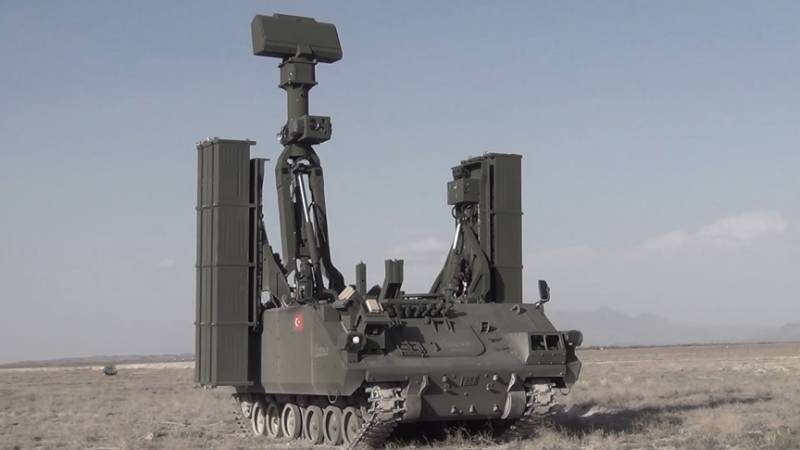
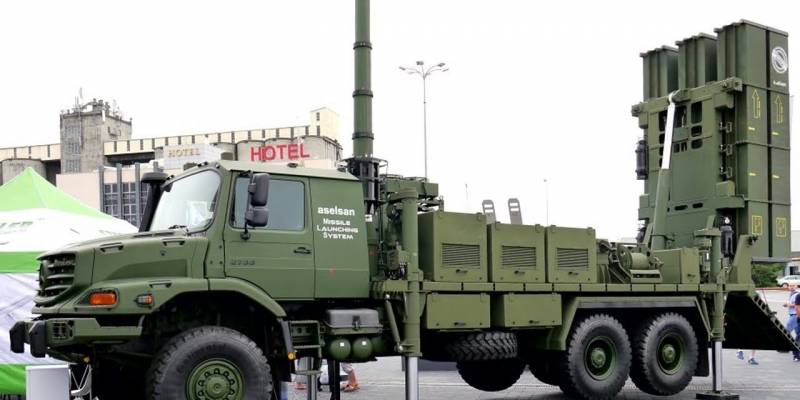
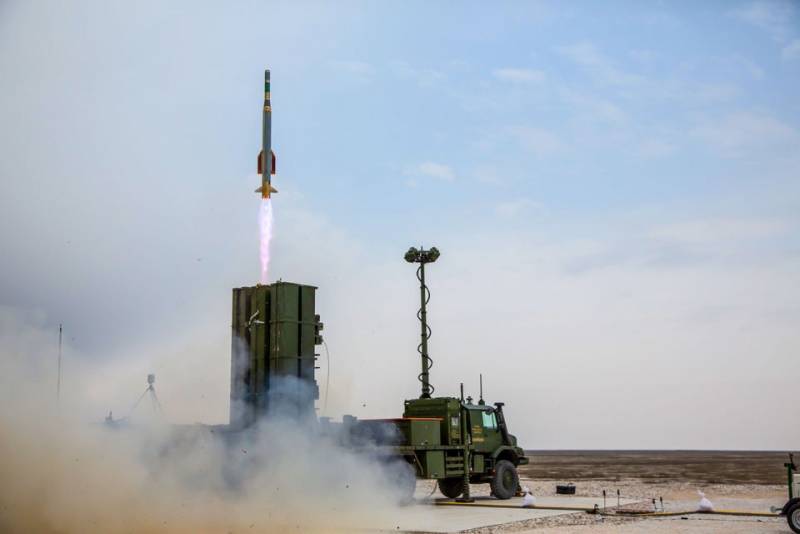
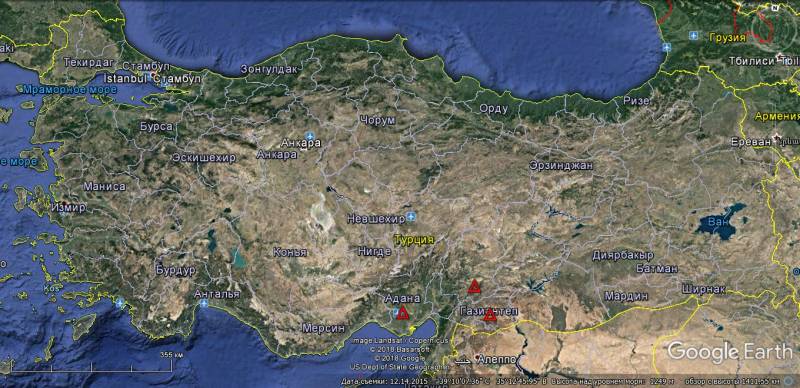
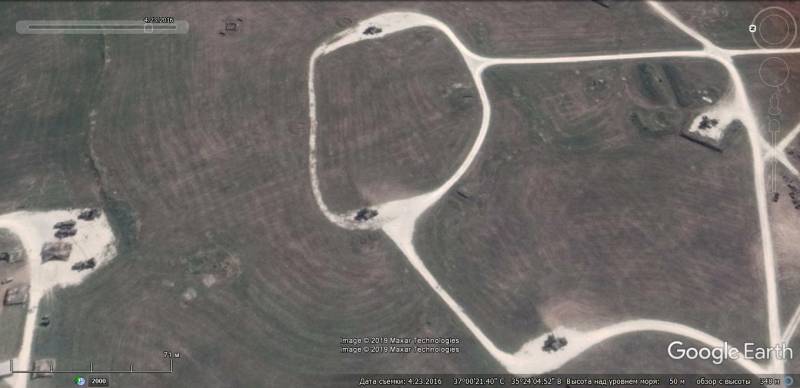
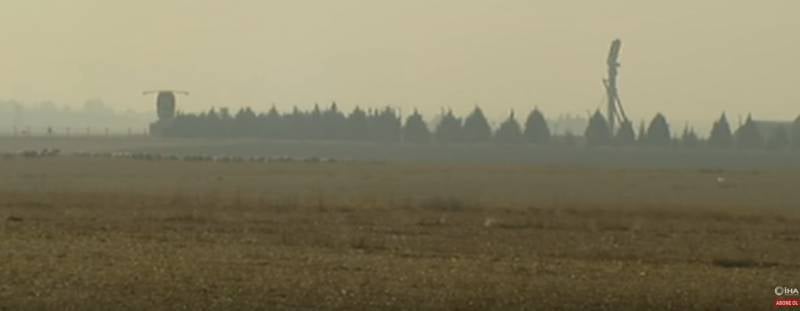
Information